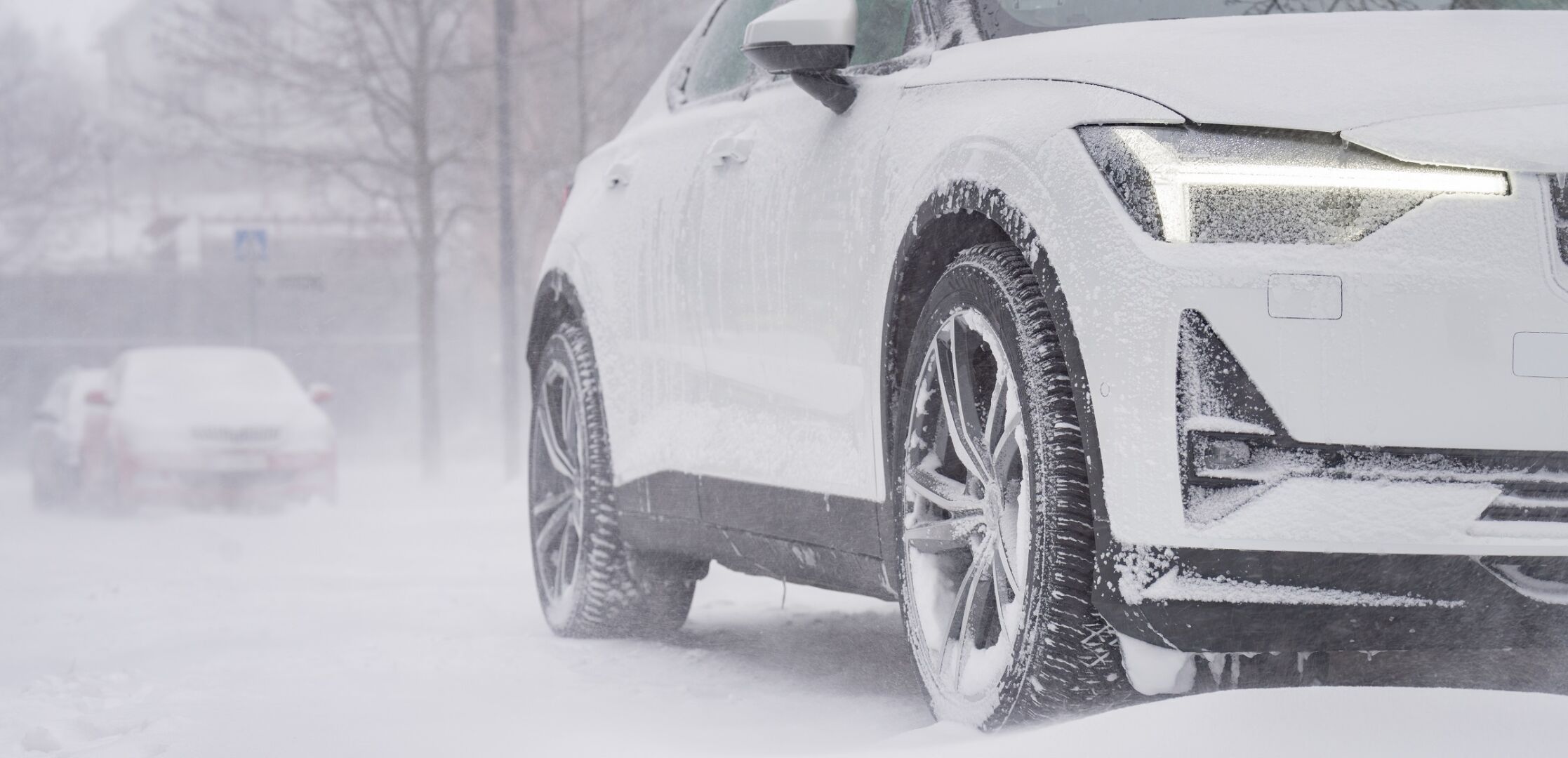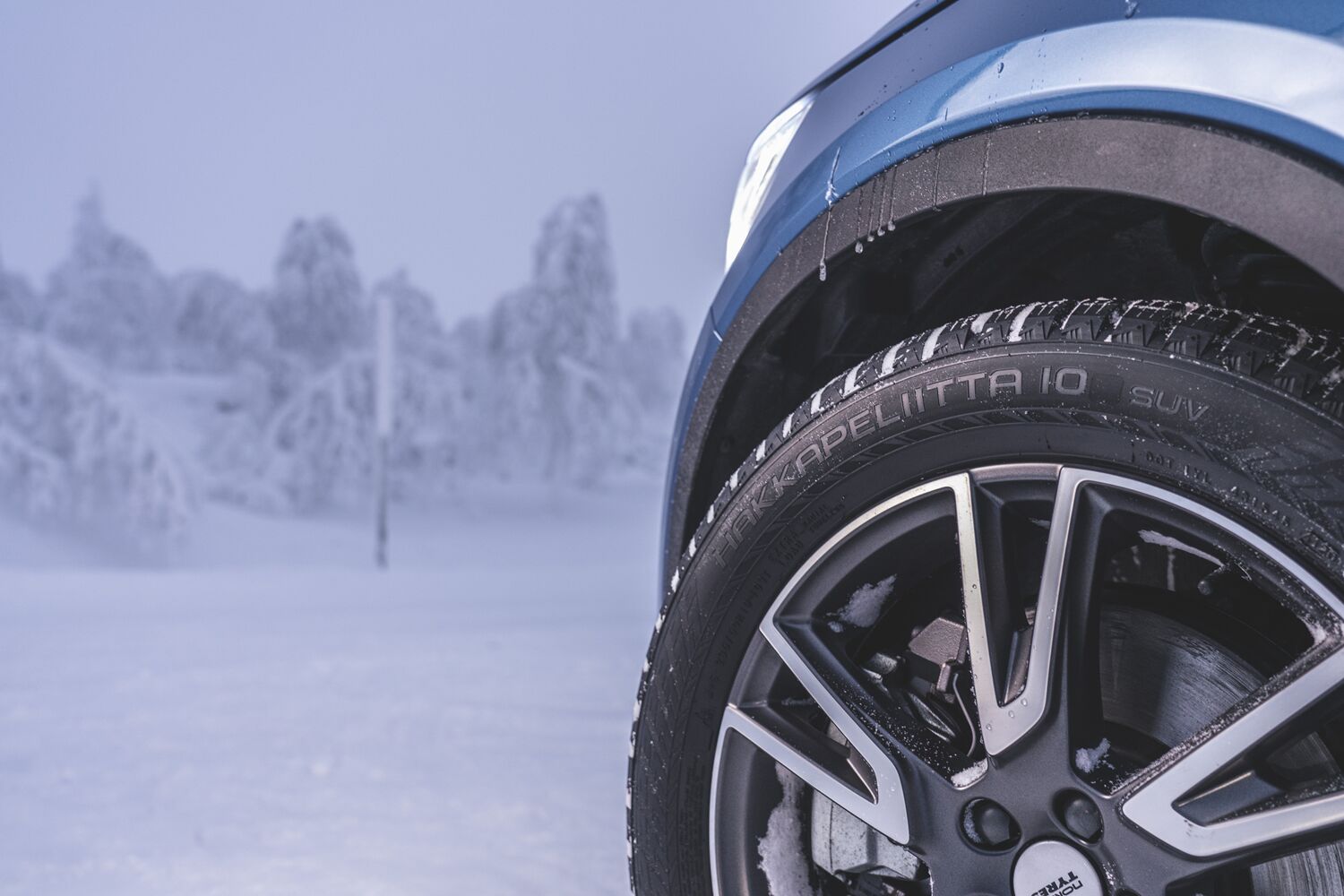
Using winter tires promotes better grip and safer driving during cold, winter months. Learn when the right time is to put on winter tires, and when to take them off.
Winter tires help promote safe driving during the coldest months of the year in places that receive winter snow and ice. They are specifically designed to provide better grip and control in snowy, icy conditions, and cold temperatures.
Installing winter tires at the right time guarantees better grip and contributes to a smoother, more secure driving experience. Watch our video on TikTok or here on YouTube Shorts to learn more:
When to change to winter tires? Well before winter weather
The only connection your vehicle has with the road is through its tires. So you can imagine how important it is to do everything you can to ensure your tires perform optimally in the weather conditions you face. Knowing when to put on winter tires plays an important role in that.
Install winter tires before freezing temperatures hit. As a good rule of thumb, consider changing to winter tires when the temperature consistently drops to about 45 degrees Fahrenheit (~7 degrees Celsius) or lower. It's important to note that even if daytime temperatures rise, nights and early mornings can remain significantly colder. Also, be attentive to the weather when traveling long distances, as different zones can experience varying conditions and lower temperatures.
Some areas of Canada and the U.S. enforce laws regarding when to put on winter tires, and also whether studded tires are permissible or not in certain states and provinces. Be sure to check your local laws and regulations to ensure your tires are compliant.
Winter Tires Are Crucial for Safe Driving
Winter tires are made of a special rubber compound, which is softer than the rubber compound utilized in all season tires. This special rubber compound used in winter tires retains flexibility in colder temperatures, helping to ensure consistent road grip. Winter tires also feature deeper treads and a special tread pattern, providing better traction and bite on snowy and icy surfaces. Looking to read more on this topic? Read our 3 tips for tire changeover season.
Should You Use Studded Tires or Non-Studded Tires?
The decision between non-studded winter tires and studded tires depends on the driving conditions you expect to encounter and your local laws and regulations, as studded tires are prohibited in some areas of North America.
Studded tires are ideal for areas with frequent ice and extreme winter conditions because they offer ultimate grip on ice-covered roads. But, you must be aware of your local laws and regulations to ensure they are allowed on the roads where you drive. Are you in the market for studded winter tires? Consider our Nokian Tyres Hakkapeliitta 10 range for passenger cars and SUVs, or our Hakkapeliitta LT3 for pick-up trucks.
Non-studded winter tires (also called studless winter tires) offer versatility, uncompromising grip, and smart driving features for snowy roads. It is important not to mix different types of tires - as in, different styles, brands, sizes - for it could reduce predictability and control over the vehicle. Are you in the market for non-studded winter tires? Consider the Consumer Reports Recommended Nokian Tyres Hakkapeliitta R5.

When to Switch Back to All-Season Tires?
Winter tires’ soft rubber can suffer damage under high heat. All season tires are designed to excel in warmer weather and wet surfaces, especiall the Nokian Tyres Surpass AS01. When the winter months are over, it's time to switch back to all season tires. Make your decision to change winter tires to all season tires based on temperatures and road conditions. When the seasonal temperature climbs consistently above 45 degrees Fahrenheit (~7 degrees Celsius), you might consider changing them.
Select tires based on weather conditions and do your best to ensure safety on the road year-round. Our Tire Buying Guide can help you decide what tire type is best for the weather conditions you experience.
We recommend regular tire rotation when transitioning to and away from winter tires. A good rule of thumb is to consider a tire rotation each time you bring your vehicle for an oil change. This practice ensures even wear and prolongs the lifespan of your tires. Before tire replacement, consult the tire restrictions and recommendations provided by the vehicle’s manufacturer (you can find this in your vehicle's owner's manual).
Consult your local Nokian Tyres dealer if you have questions about when you should change your tires over. Be sure to check local laws and regulations if you are considering purchasing studded winter tires or when you need to change from winter tires to all-season tires.
Please remember that it is the driver’s responsibility to ensure their tires are safe and suitable for their vehicle and to follow the vehicle’s manufacturer´s guidelines for proper use and maintenance. Consult your closest Nokian Tyres dealer or your vehicle’s manufacturer for specific advice.


